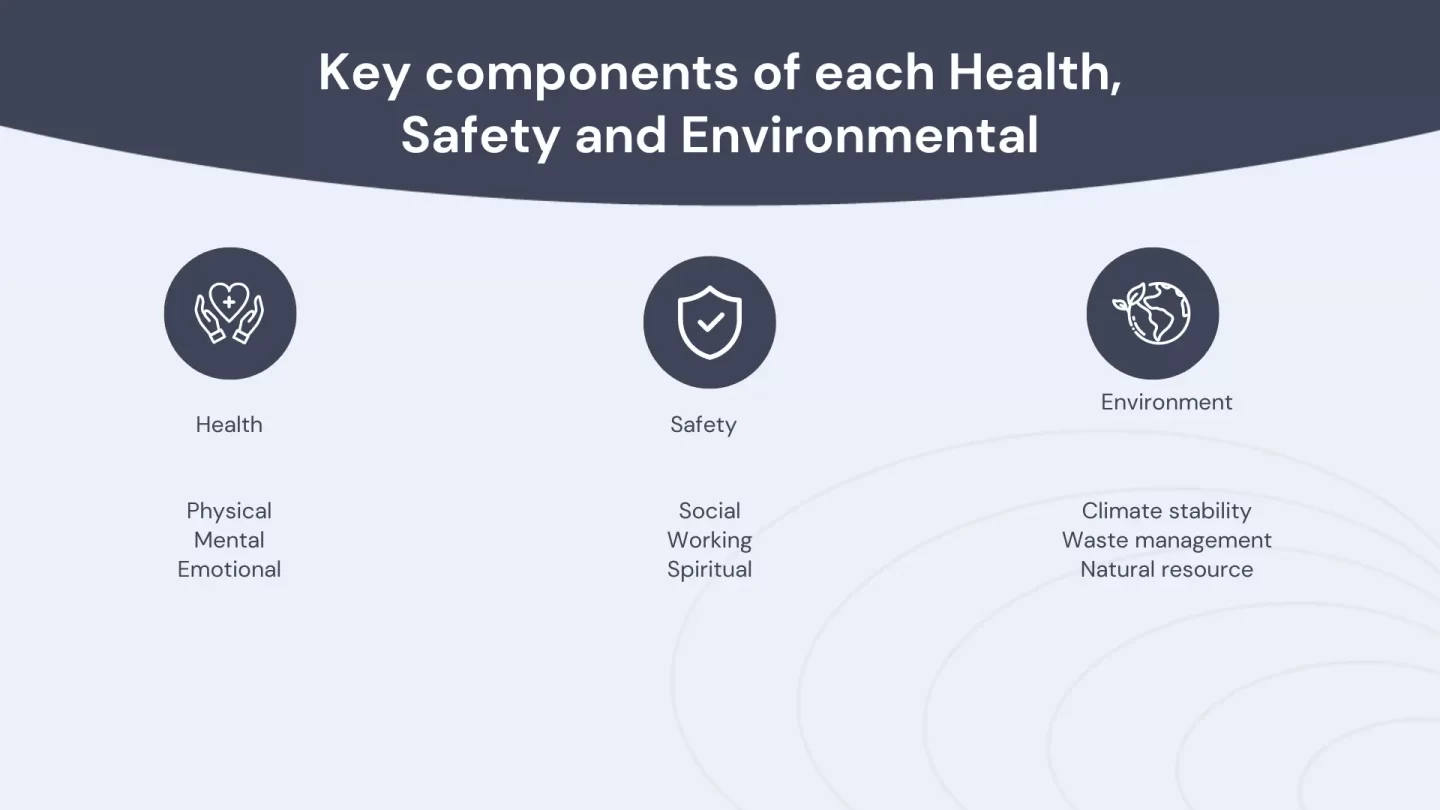In this guide, we define HSE and explore its key components. We discuss the importance of Health, Safety, and Environment management systems. We highlight best practices and the benefits of prioritizing HSE in the workplace. This guide offers valuable insights for professionals and those interested in workplace well-being.

Definition of Health, Safety, and Environment (HSE)
Health, Safety, and Environment (HSE) is a comprehensive approach focusing on workplace safety and environmental protection. It includes practices, policies, and procedures to safeguard employees, contractors, visitors, and the environment. HSE management involves risk identification, mitigation, promoting safety culture, and ensuring regulatory compliance.
Key Components of HSE
HSE consists of several interrelated components, including:
Health
Health focuses on promoting physical and mental well-being, preventing occupational illnesses, and addressing workplace hazards that may impact employee health. This includes measures such as ergonomics, wellness programs, and occupational health surveillance.
Safety
Safety measures aim to prevent accidents, injuries, and fatalities in the workplace. This involves implementing safety protocols, conducting risk assessments, providing proper training, and maintaining safe working conditions.
Environment
Environment refers to the protection and preservation of the natural environment surrounding the workplace. It involves minimizing environmental impacts, managing waste, conserving resources, and complying with environmental regulations.

Key components of each Health, Safety and Environmental. Source.
Importance of HSE Management Systems
HSE management systems provide a structured approach to implementing and maintaining effective practices within an organization. These systems help establish clear responsibilities, set objectives and targets, monitor performance, and continuously improve performance. By implementing robust Health, Safety and Management management systems, companies can proactively identify and mitigate risks, foster a culture of safety, and achieve regulatory compliance.
Best Practices for Ensuring HSE Compliance
To ensure compliance, organizations should consider implementing the following best practices:
a. Leadership Commitment: Leadership should demonstrate a visible commitment to Health, Safety and Environment by establishing policies, allocating resources, and actively promoting a culture of safety.
b. Risk Assessments: Regularly assess workplace hazards, evaluate risks, and implement appropriate control measures to mitigate risks to an acceptable level.
c. Training and Awareness: Provide comprehensive HSE training to employees at all levels, ensuring they have the knowledge and skills necessary to perform their jobs safely.
d. Incident Reporting and Investigation: Establish a robust incident reporting and investigation process to identify the root causes of incidents, implement corrective actions, and prevent future occurrences.
e. Continuous Improvement: Foster a culture of continuous improvement by conducting regular audits, reviewing performance metrics, and implementing corrective actions to enhance practices
Benefits of Prioritizing HSE in the Workplace:
Prioritizing it in the workplace yields numerous benefits, including:
Enhanced Employee Well-being
A strong focus promotes a healthy and safe work environment, leading to improved employee well-being, morale, and job satisfaction.
Reduced Incidents and Accidents
By prioritizing Health, Safety and Environment, organizations can minimize workplace incidents, injuries, and accidents, leading to a safer and more productive work environment.
Regulatory Compliance
Compliance with regulations and standards helps organizations avoid penalties, legal issues, and damage to their reputation.
Cost Savings
Effective management can reduce costs associated with workplace incidents, insurance premiums, and workers’ compensation claims.
Improved Efficiency and Productivity
A safe and healthy workplace reduces downtime due to injuries or illnesses, resulting in increased productivity and efficiency.
Enhanced Reputation
Prioritizing HSE demonstrates a commitment to responsible and sustainable practices, enhancing the organization’s reputation among stakeholders, clients, and the community.
Conclusion
In conclusion, Health, Safety, and Environment (HSE) are integral aspects of creating a safe and sustainable workplace environment. By implementing effective management systems, organizations can protect the well-being of their employees, minimize risks, and ensure compliance with regulations. Prioritizing HSE yields multiple benefits, including improved employee well-being, reduced incidents, regulatory compliance, enhanced reputation, and cost savings.
Frequently asked questions
HSE is of paramount importance in the workplace for several reasons. Firstly, it helps protect the well-being and safety of employees, contractors, and visitors, reducing the risk of accidents, injuries, and occupational illnesses.
Promoting a culture of HSE requires a comprehensive approach. Organizations can foster such a culture by establishing clear leadership commitment to HSE, providing adequate resources for HSE programs, and integrating HSE into the core values and mission of the organization.
By prioritizing employee well-being and safety, organizations can reduce workplace incidents, injuries, and absenteeism, leading to improved productivity and efficiency.






